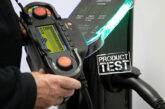
Pete ‘Monty’ Monfort, Director at Arena Training and Monty Electrics, offers some useful pointers when working with DC circuits.
The majority of electricians, whilst familiar with the principles of direct current, are lacking in actual experience of working with DC circuits. This is largely due to public low voltage supplies being 230/400 V AC.
However, with the proliferation of photovoltaic systems, rectifiers, wind turbines, electrical energy storage systems and electric vehicle chargers, which utilise direct current, perhaps it’s time to brush up on your knowledge so that you can be safe at work and not fall foul of Regulation 16 of the Electricity at Work Regulations 1989 which states:
“No person shall be engaged in any work activity where technical knowledge or experience is necessary to prevent danger or, where appropriate, injury, unless he possesses such knowledge or experience, or is under such degree of supervision as may be appropriate having regard to the nature of the work.”
I hope this article will provide you with some food for thought and encourage you to explore the topic further.
Isolation and earthing considerations
DC supplies may or may not be earthed. If you intend to operate an earthed DC system independent of the AC supply you must ensure the means of earthing continues to function by meeting the requirements of BS 7671 551 Low Voltage Generating Sets.
Regardless of earthing, where DC supplies operate in the absence of an AC supply, steps must be taken to ensure that energised parts of the system can be isolated and that users, maintenance staff and emergency workers are able to safely isolate the DC system.
Arcing
Alternating current rises and falls meaning that the current is zero Amps 100 times a second for a 50 Hz supply and subsequently arcs are more quickly extinguished. You can sometimes see an arc when switching a load (such as an immersion heater) as a faint flash of light through the side of the switch.
Direct current does not pass through zero and can draw a significant arc for longer periods of time over larger distances than similar voltages of alternating current.
When selecting switchgear it is essential that DC rated equipment is selected since the mechanisms are designed to operate more quickly and may have larger more robust parts.
Often AC and DC switchgear appears to be the same product but closer inspection will reveal that DC components are rated for lower voltages and current. Switches are often linked-out too, effectively doubling the switch gap by utilising two switches in series.
The removal of fuses and disconnection of plug and socket connectors can result in damage. Loads should be removed and proved dead before attempting to disconnect.
A good DC clamp meter (preferably one with a flexible loop to permit access in tight areas) will be useful. With some equipment you may need to leave time for capacitors to become safe or discharge them in line with manufacturer instructions.
When selecting protective devices it’s important to confirm if the British Standard of the device selected covers DC and, where it can be utilised in AC and DC systems, take note of the voltage range which will be lower for DC than AC.
Identifying DC cables
Table 51 of BS 7671 provides a list of colours used in DC systems but it is recommended to label DC cables throughout their length and segregate them from AC cables when run in containment.
Electrolytic corrosion
Electrolytic corrosion is a process which occurs when metals in building structures are in contact with the ground.
When current flows in one direction it can cause the metal work to be oxidised (corroded) which may lead to premature failure. It is often hidden, given that the reaction is in the ground.
Electricians working in the rail sector will be all too familiar with this issue where large DC currents are present, but the rest of us might be less so.
Conclusion
Both AC and DC supplies have the capacity to kill so it’s important to treat it with the respect it deserves.
If you’re unfamiliar with DC supplies a good starting point to help you with understanding more about the subject would be the IET’s Technical Briefing – Practical considerations for d.c. installations – available for free through the link below.
Access the IET Technical Briefing here
Learn more about Arena Training’s courses here
Find more technical articles here









